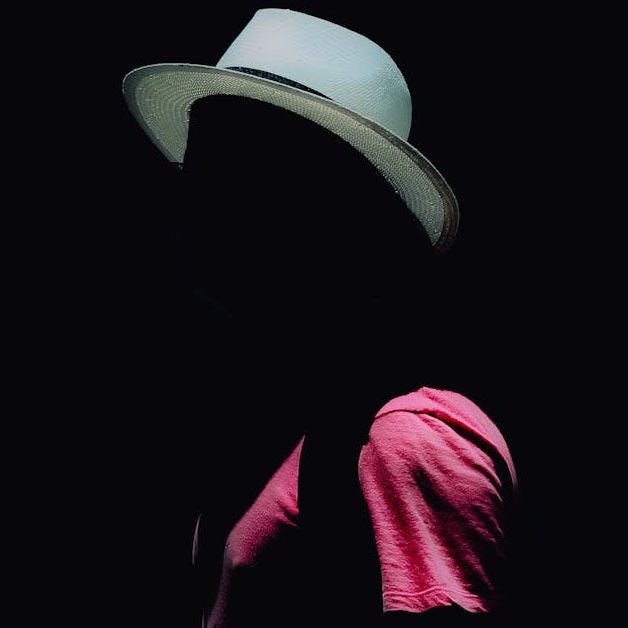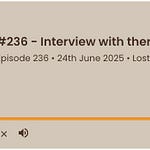“I miss what I already have, and I surround myself with things that are missing.”
— Jonathan Safran Foer, novelist
How might you see a color you can’t see, or describe to another person a color they can’t see? This question comes up from time to time when we talk about things we cannot find the words for. It’s a reference to blind spots and how we move into new territory.
The question is central to understanding consciousness and mental health but, naturally, we don’t have the words to talk about what we cannot see. Instead, we talk about the methods we use: methods to see, think, and act better or differently; methods of mental health, performance, and power. We talk about leaders, workers, students, and teachers, but these are all diversions from the real question, which is how we achieve something new.
Dichotomies help us understand differences using contrast and distinction. When we’re trying to understand conflicts, we look for some measure of difference. Without differences, there can’t be change.
Everyone, including myself, struggles with growth and change. The alternative is stasis. We normally avoid stasis by living in a changing world, and this makes us appear responsive and alive. But we deceive ourselves because being responsive does not mean that we’re alive. Everything is responsive, whether it’s alive or not.
When we get old and our world slows down and stops changing, most old people stop changing too. They become inert, and we recognize this as an early form of dementia. You don’t have to be old to create a static world, and you don’t have to have dementia to cease growing.
Most of my clients, to their credit, are working to grow faster than their environment is changing. They’re trying to guide the changes in their environment and control how they’re changing in it. They’re trying to find words for things they cannot see.
Life and Learning
At root, learning is close to life. All things change, but living things learn. We could say that to be alive is to learn, but we no better understand learning than we understand life. Defining one in terms of the other is a tautology, by which I mean we understand neither.
One of my great annoyances is teaching. If you see learning as the process of life and change, then what is teaching? At best, teaching is facilitating. It is the provision of what sustains change. At worst, teaching limits by constricting change. Our most familiar form of teaching happens in schools, which is teaching’s worst form. Its best form comes through “life lessons” and other natural processes, which are distinguished by their authentic complexity. These are the best teachings.
The reason we have schooling is that it’s easy and works toward greater integration. School integrates people in exchange for their insight, autonomy, and human potential. This is the social contract: society will help provide for you if you work to sustain society. You do that by exchanging your life’s potential in the service of conformity in thought, action, and social stability.
There is an unrecognized, negative side effect to learning, thinking, and acting according to expectations. When you act according to expectations, you don’t learn who you are, and you don’t learn how to think. You don’t develop a good sense of things that exist outside of the container you’ve been taught to see.
This all happens before you’re old enough to know what’s going on. Your ability to think and see, as well as your ability to imagine, develop before and during your adolescence. Your mind is most pliable before you can see yourself separately from your parents, and clearly enough to develop your own worldview. At this stage, your family is your primary learning environment, although society desires to control what you think.
Schools focus our thinking, and they do this by posing problems that limit our thoughts. The situations that foster our growth and insight come from our social and natural environments. The larger our social and natural environments, the more we’ll learn. These environments are different from school because they don’t ask simple questions, don’t offer clear answers, and always show us things we have neither the words nor thoughts to understand.
Schools show us things we can see and point out their details. That’s how teaching works. The social and natural worlds show us things we cannot see in all their detail, and that’s how learning works. You don’t learn in school; you are trained. You learn in environments that change and respond to you in ways that go beyond what you can see.
Relationships
All things are relationships. We only know anything in terms of the interactions between things. This is so fundamental as not to mean anything, so it’s more useful to say that our most important learning situations are our personal relationships. Everything else is skills acquisition.
Learning skills is a process that changes us, but it’s not a particularly intelligent process. Certainly, skills take brain power and attention, but learning skills is within the power of anyone who can maintain focus.
Relationships require more than focus. You are dragged forward in a relationship with another person and, if you can’t keep up, you must escape or be dragged under. Ideally, relationships prosper, but that’s not the norm. In a world of change, growth, and conflict, relationships present these dynamic elements all mashed together.
I’ve come to look at my counseling work as relationship work. In some cases, the relationship between partners is the focus of our work, but mostly I’m working with one person’s relationships.
Where there’s support, there’s mutual understanding, and where there is conflict, there’s a lack of understanding. Which brings me back to the question of how do you truly “see” another?
The sight people need, which would more accurately be called insight, is the understanding of what gives them purpose, meaning, and nurturance. We might call this love, since that word plays a key role and remains undefined.
On the other hand, bundling everything you need to understand about purpose, meaning, and nurturance into a single word makes it incomprehensible. The question is, how to break this concept down into understandable parts without it collapsing into conceptual rubble?
If you’d like to have deeper insight to important things, then call me for a free conversation.
Listen to this episode with a 7-day free trial
Subscribe to Stream of Subconsciousness to listen to this post and get 7 days of free access to the full post archives.














